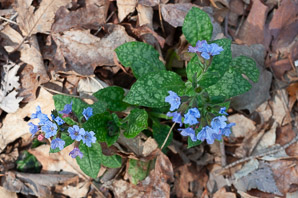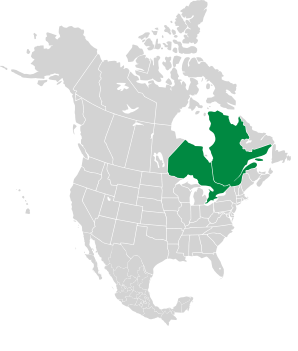
|
Pulmonaria officinalis L. Lungwort
Pulmonaria is not a North American native. It comes from Europe and western Asia, and it has become naturalized in the United Kingdom and part of Canada. Both the scientific name Pulmonaria and the common name "lungwort" derive from the "Doctrine of Signatures," an old belief that plants that resembled parts of the body were intended to treat them. The spots on the leaves resembled ulcers on ailing lungs, so the plants were used to treat pulmonary infections, among them coughs and bronchitis. (Note: there is a completely different plant that is also called lungwort, for essentially the same reason: its resemblance to lungs.) Identification: Plants are 10-12″ (25-30 cm) tall and 1-1½′ (30-45 cm) around, with a hairy green stem. It has upright-facing lance-shaped dark green leaves that are hairy and rough, and speckled with silver spots. Loose clusters of ½″ (1.3 cm) 5-petaled bell-shaped flowers are pink to violet to blue. Medical: In addition to use for treatment of lung conditions as mentioned above, it has also be used to cleanse the digestive system, and for treating diarrhea or cystitis. It has been used to strengthen the uterus during pregnancy or to help with childbirth; as a gargle for sore throats; or to help reduce bleeding after passing kidney stones. Its effectiveness for any of these purposes is dubious. Online References:
Plants for a Future, a resource and information centre for edible and otherwise useful plants
Pulmonaria officinalis description by Thomas H. Kent, last updated 25 May 2020. © FloraFinder.org. All rights reserved. |
Found in the woods, but it must have escaped from a nearby yard. · 4/13/2010 · Nashua River Rail Trail, Groton Center, Groton, Massachusetts · ≈ 9 × 6″ (23 × 15 cm) Found in the woods, but it must have escaped from a nearby yard. · 4/13/2010 · Nashua River Rail Trail, Groton Center, Groton, Massachusetts · ≈ 11 × 7″ (27 × 18 cm) Range: Zones 3-8:
|




